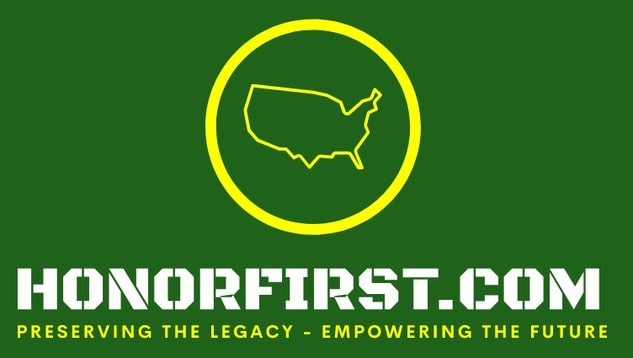December 5 - December 11USBP History “Organizational pride is the positive feeling experienced by employees from being part of a meaningful team that is rich in history, tradition and culture.” Honor First and Esprit De Corps 1924
Newton-Azrak Award Actions (Upholding Honor First) An organization’s values are codified in its awards system. Recognizing the achievements, service and heroism of employees is important. It is critical for those in positions of leadership to value the workforce. Awards are a fundamental manner for leaders to demonstrate appreciation to the workforce for upholding the organizational values. – U.S. Border Patrol Honorary Awards No Newton-Azrak Award action anniversaries for the week. USBP Fallen
As of December 5, 2021, the U.S. Border Patrol has suffered 150* fallen. Titles
The names that appear below hold a place of honor. They have made the ultimate sacrifice in an effort to fulfill the oath each officer took to protect and defend the United States of America. The facts regarding each officer are presented without major editing of the "language of the day" found in the reports detailing the circumstances of each event. This is done to provide the reader an association with historical timeframes. Employees who died in the line of duty due to being exposed to deadly illnesses will not have the cause of death listed. *With the exception of two of the fallen immediately below, all names are listed (or in the process of being included) on the official Honor Roll of U.S. Border Patrol fallen and inscribed on the National Law Enforcement Officers Memorial. The U.S. Border Patrol should fix these discrepancies. HonorFirst.com honors both of the fallen.
1933 Doyne C. Melton Date of Birth: January 17, 1902 Entered on Duty: October 29, 1927 Title: Patrol Inspector End of Watch: December 7, 1933 Details: Patrol Inspector Doyne C. Melton was shot and killed in a battle with Mexican smugglers at El Paso, on December 7, 1933. Six Patrol Inspectors were moving up in the darkness on seventeen Mexican smugglers who were wading across the river with packs of liquor. One of three smugglers acting as spotters who had preceded the main body of the smugglers over the river, concealed beneath a platform on the American side, opened hostilities by shooting Inspector Melton. The opening shot was fired without warning and before any challenge had been given. Inspector Melton was shot through the heart, dying instantly. The bitterness of the fight was evidenced by the fact that in addition to the slaying of Inspector Melton, four smugglers were killed and another was wounded. 1968 James G. Burns Date of Birth: July 31, 1924 Entered on Duty: June 8, 1955 Title: Senior Patrol Inspector End of Watch: December 8, 1968 Details: Official reports covering the death of Senior Patrol Inspector James G. Burns indicated he was performing line watch operations, looking for evidence of illegal aliens in a river bottom near Calexico, California, on Sunday, December 8, 1968. He was searching places of concealment in heavy undergrowth, which was exceptionally strenuous activity and required considerable physical exertion. At 6:30 a.m., he began to suffer pains in the chest area, which prompted him to immediately return to the office. He was taken home by another officer and was then conveyed to the El Centro Community Hospital by his wife. He passed away at 8:25 a.m., less than two hours after being stricken. Death was caused by an occlusion of the left coronary artery due to arteriosclerosis.
Comments
|
Clifford GillBlog author, retired U.S. Border Patrol Assistant Chief and, current U.S. Border Patrol employee advocate. Ray HarrisSite founder and owner, former Supervisory Border Patrol Agent and retired Immigration Special Agent. Joseph BancoU.S. Border Patrol historian and retired Deputy Chief Patrol Agent. Archives
July 2024
I prefer that you leave comments. However, if you wish to contact me, please do so by emailing [email protected].
|
- Home
-
For USBP Applicants
-
USBP Pages and Links
- Firearms Qualification Course
- Military Time Buy Back
- Station MWRs
- Transitioning Out of the USBP
- Fast & Furious
- U.S. Border Patrol Fallen >
- Honor First and Esprit de Corps
- USBP Photo Galleries
- U.S. Border Patrol History >
- U.S. Border Patrol Honorary Awards
- Upholding Honor First >
- U.S. Border Patrol Authorized Devices
- Border Patrol Stories
- What's Important Now - Academy Podcast
- Badges
- Veterans
- Tips for the Media
- Links
- Acronyms
- Border Patrol Locations
- Sector/Station FaceBook Pages
- Ten Codes
- Online Forums
- Search
- Home
-
For USBP Applicants
-
USBP Pages and Links
- Firearms Qualification Course
- Military Time Buy Back
- Station MWRs
- Transitioning Out of the USBP
- Fast & Furious
- U.S. Border Patrol Fallen >
- Honor First and Esprit de Corps
- USBP Photo Galleries
- U.S. Border Patrol History >
- U.S. Border Patrol Honorary Awards
- Upholding Honor First >
- U.S. Border Patrol Authorized Devices
- Border Patrol Stories
- What's Important Now - Academy Podcast
- Badges
- Veterans
- Tips for the Media
- Links
- Acronyms
- Border Patrol Locations
- Sector/Station FaceBook Pages
- Ten Codes
- Online Forums
- Search


 RSS Feed
RSS Feed
